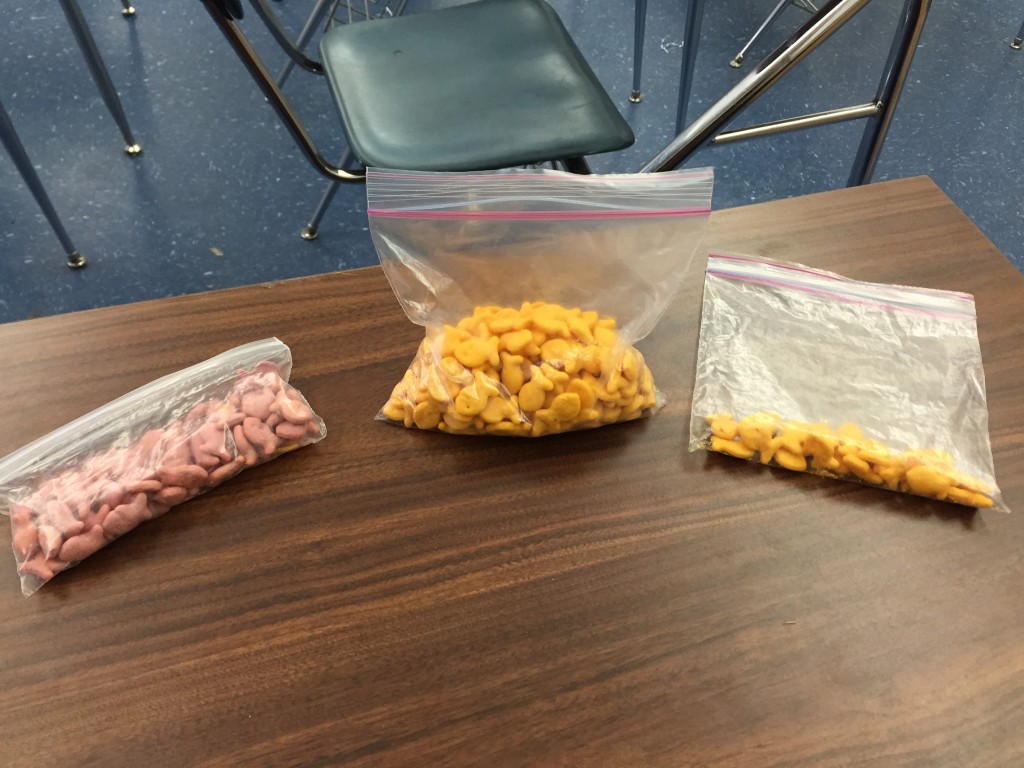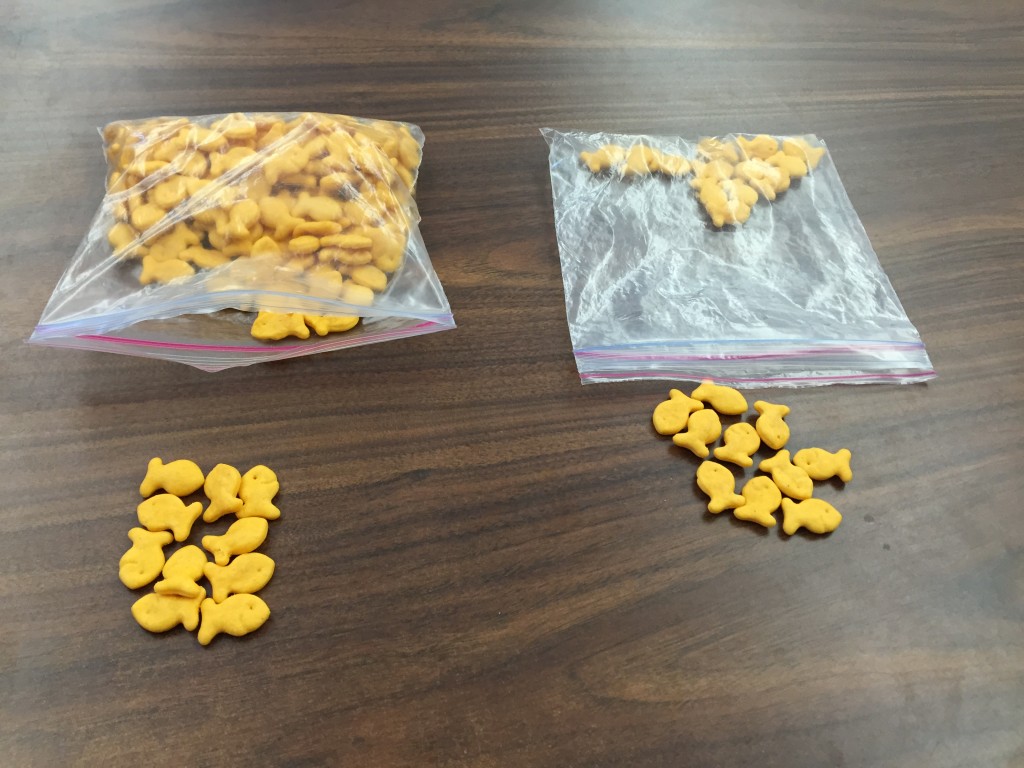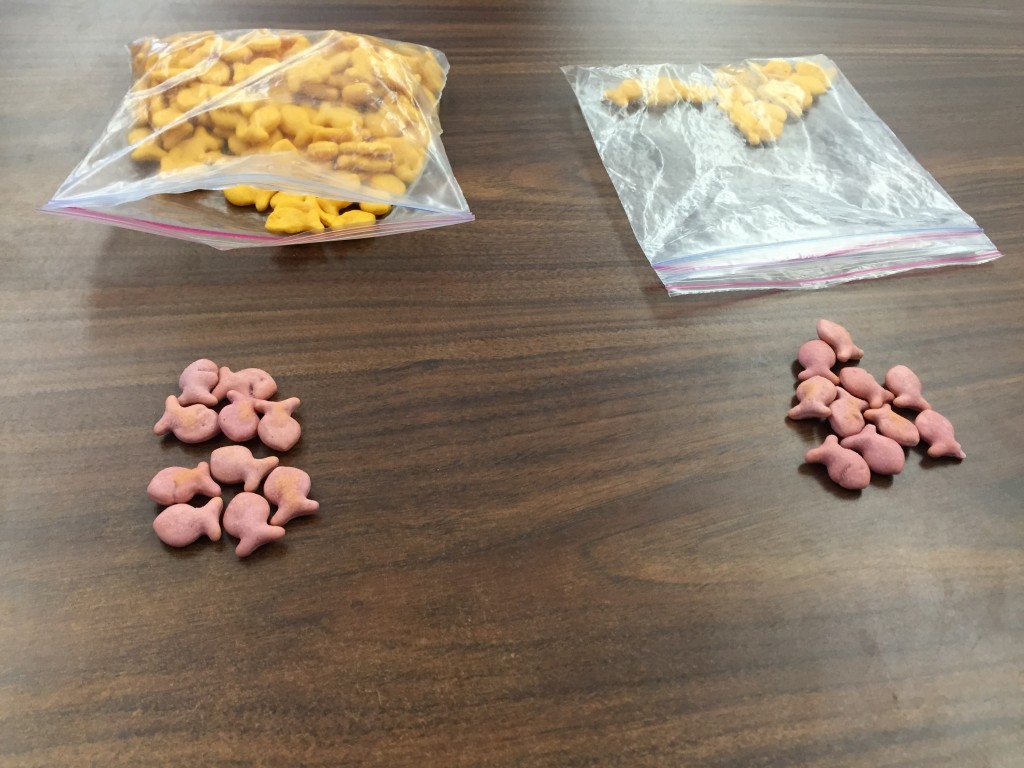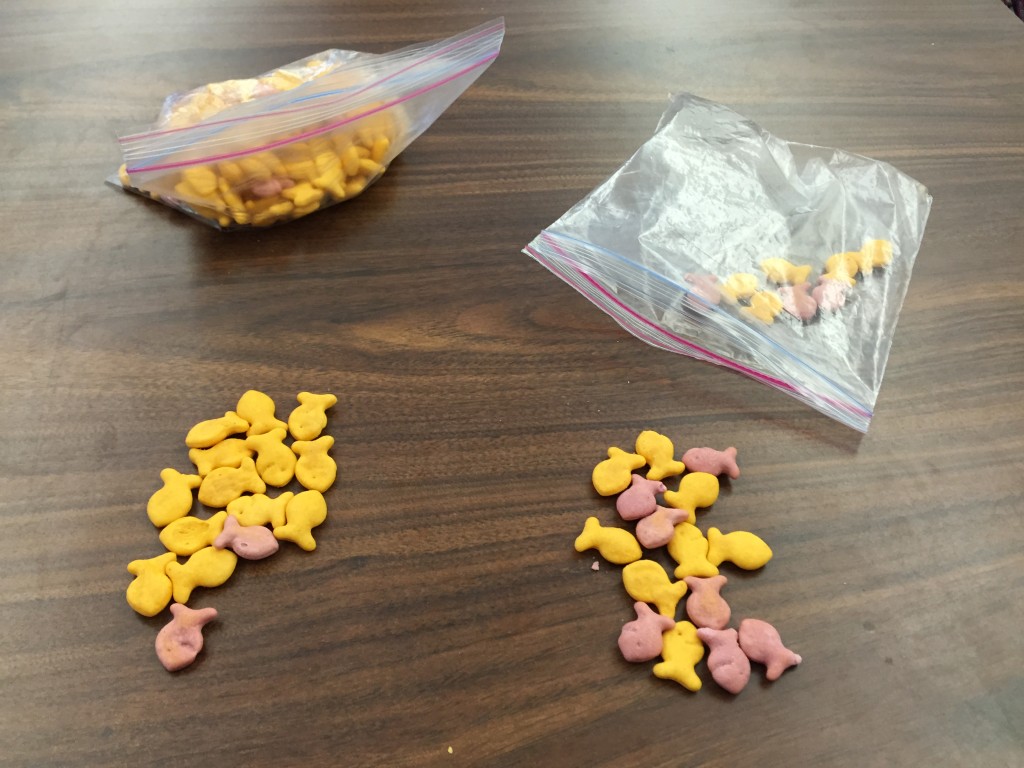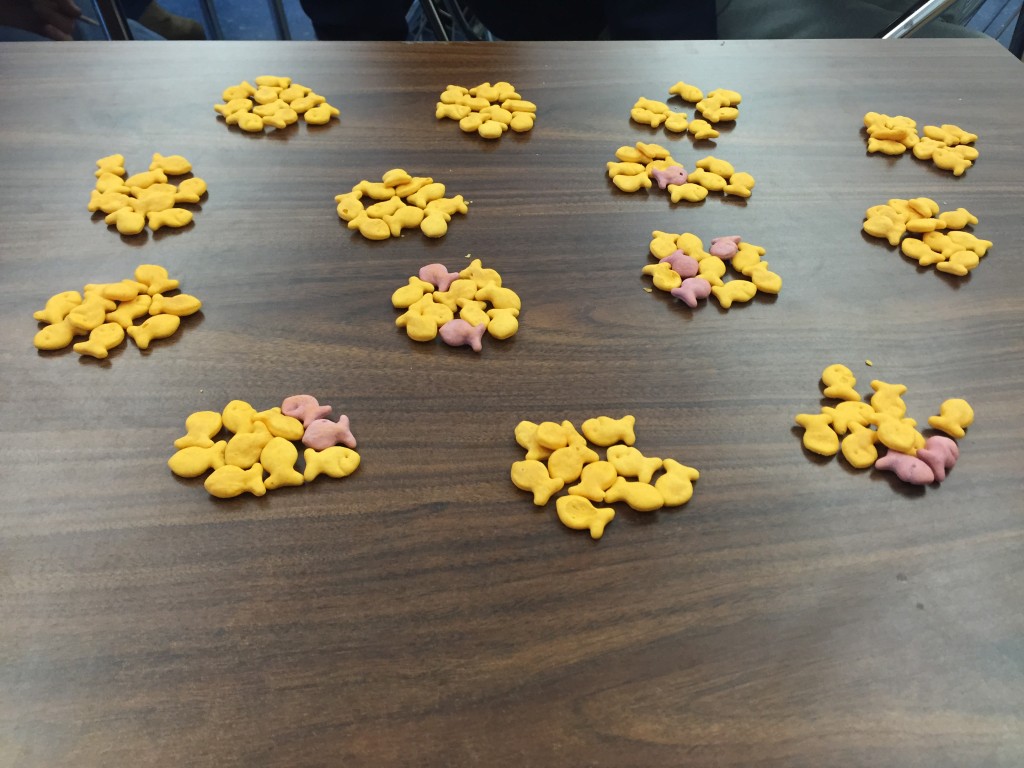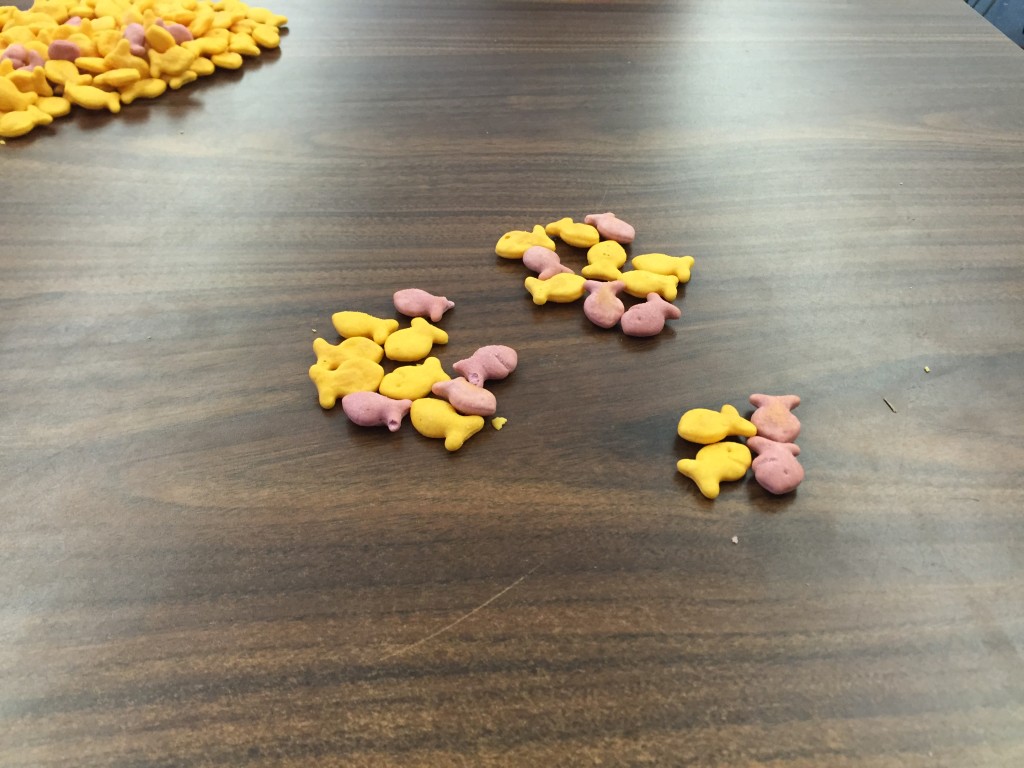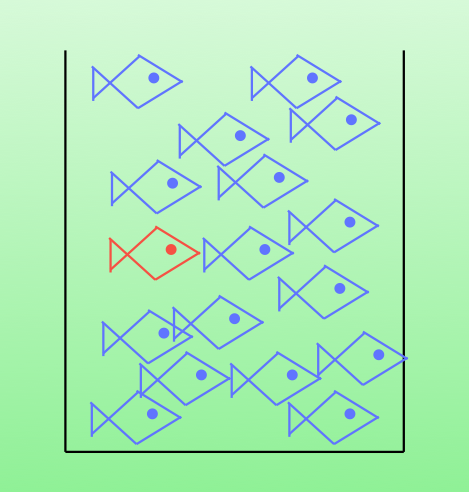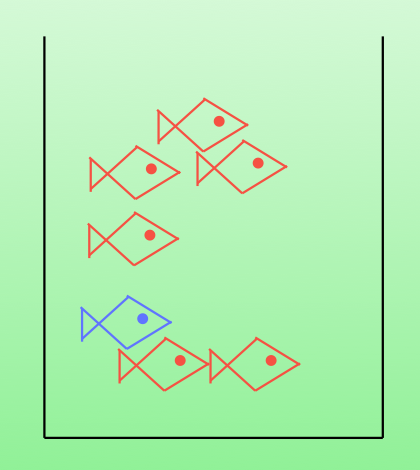This is a popular activity – here is a link to a post from Dan’s blog back in 2008 about the same lesson. I’m writing about it now because I love it and want to remind people of it if they had forgot.
The lesson is great because…
- It’s “real enough world“
- It’s a true mathematical model so
- Students get to question the assumptions its based on
- Students get to see what effect those assumptions have on the model
- Students get to validate the model through experimentation.
- Allows students to estimate the solution. (Based on these results would we perceive the forest to have a high or low population of deer?)
- Has a high ceiling as part B above is a fairly high level evaluation of the model.
The lesson has a few drawbacks
- It doesn’t have an open middle. The only variation in methods comes from how they set up the proportion.
Brief overview of Capture / Recapture: It’s a technique used to estimate populations. For example, let’s assume we wanted to estimate the population of fish in a lake. We would first capture and tag a set of fish. After releasing them and giving them time to disperse back into the lake we would go back out and capture another set of fish and see how many of these recaptured fish had a tag from the first capture. We would then assume that the ratio of tagged fish in our second capture, to the size of our second capture, is exactly the same as the ratio of fish we tagged in our first capture to the total population of the lake.
Is that model valid? Turns out to be surprisingly accurate based on some interesting assumptions that the worksheet at the end will take the students through.
I use regular and pink goldfish to take students through a simulation. In groups of two, each student gets a lake with a lot of fish in it, a lake with not very many fish in it, and a bag of pink fish.
h
Then I have them capture 10 fish from each lake
Now they take each captured fish (by replacing them with a pink fish)
Each fish goes back into the lake (bag) and are given sufficient time to reintegrate into fish society (shake the bag). Then go back out to the lake and again capture 10 fish. Record how many of the fish in this second capture have a tag from the first capture.
Now setup your proportion and solve. Math says that the proportion of tagged fish to non-tagged fish in the second capture is exactly the same as the proportion of fish captured in the first capture, to the total population. That those little piles of fish up there are a model of the entire fish population.
Of course we want to verify our results so we can test the accuracy of our mathematical model. After all we are trying to be the “least wrong” here, and ultimately accepting that our model doesn’t give the exact answer… but it is close enough to be acceptable to us? Let’s see, now I have them count to see exactly how many fish were in each lake:
Then the next day give them these two slides (also from Dan)
“What if this were the results of the second capture. Would we predict the total fish population was large or small?” (red fish are tagged, blue are not tagged)
“A lot or a little?”
Ok that’s it. Other than that I just recommend doing some research on capture / recapture because there are a lot of interesting research articles and youtube videos on the topic.
The Goods
Here is the worksheet that I give the students after completing the lab. I’m pretty sure this originally came from Dan Meyer’s blog, I can’t find it on there now so… yeah:
Cheers!
– B

